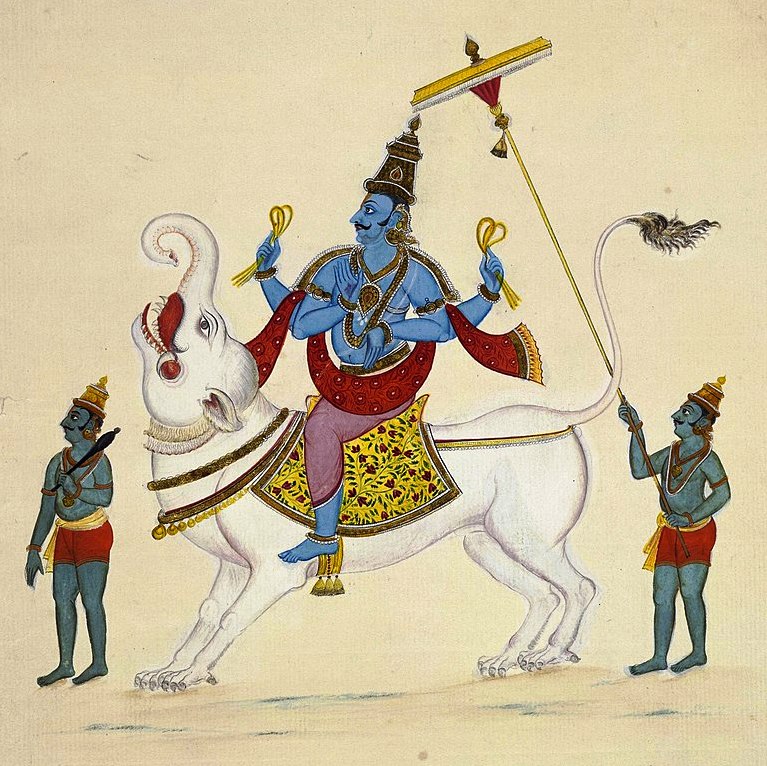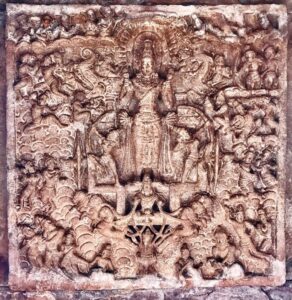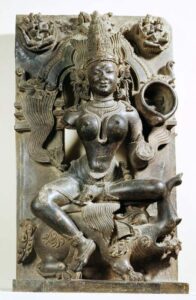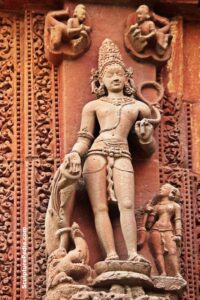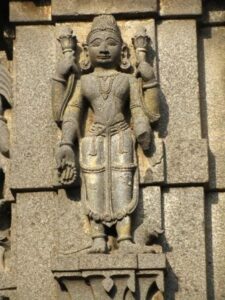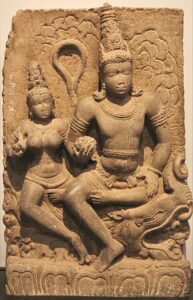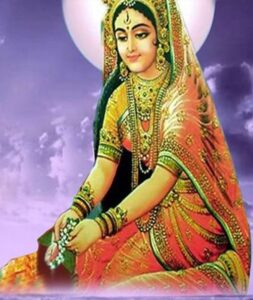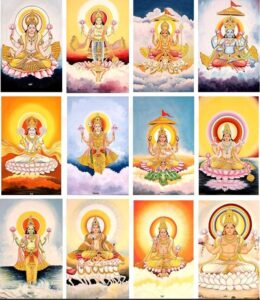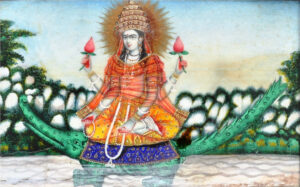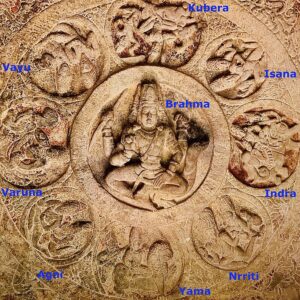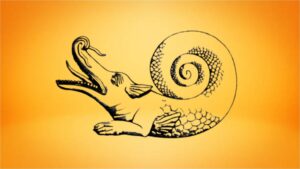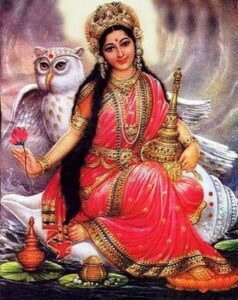Lord Varuna, a significant deity in Hindu mythology, is often depicted as the god of the oceans and the cosmic order. His presence in ancient Indian scriptures and traditions reflects a deep reverence for the natural world and the principles that govern it.
The name “Varuna” is derived from the Sanskrit root “vṛ,” meaning “to cover” or “to envelop,” which aptly describes his role in overseeing the vast expanse of the ocean and the heavens. In the Vedic cosmology, Varuna is the deity who maintains the natural order and cosmic law, known as “Rita.”
Attributes and Iconography
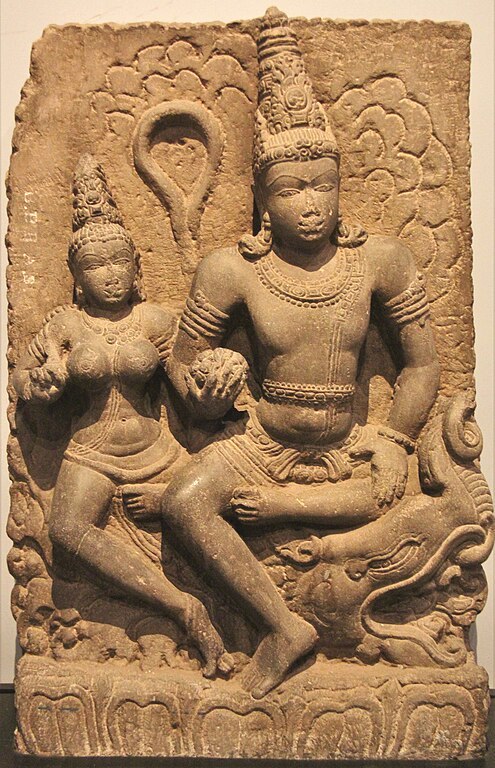
Varuna is often depicted as a regal figure, seated on a mythical sea creature or serpent, known as the “Makara.” His attributes include a pasa (noose or rope), symbolizing his power to bind and punish those who transgress cosmic laws. This noose is a key element in his iconography, reflecting his role as the enforcer of moral and cosmic order. Varuna is also associated with the color white, representing purity and the vastness of the ocean and sky.
Role in Vedic Texts
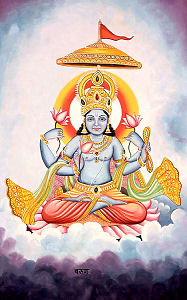
In the Vedic texts, Varuna is a central figure in the pantheon of deities, wielding immense power over the natural and moral worlds. He is often invoked in hymns as a guardian of truth and righteousness, embodying the principles of justice and moral order. Varuna’s role extends beyond the mere control of the oceans; he is also a deity of the sky and cosmic order, overseeing the movements of celestial bodies and maintaining the balance of the universe.
Varuna is also mentioned as an Aditya, the son of the goddess Aditi. In the later Hindu texts like the Puranas, Varuna is also a Dikpala or guardian of the western direction.
He has multiple wives and fathered many children, including the Vedic sage Vasishtha. His main consort is goddess Varunani or Varuni and others are Gouri, Charshani and Jyshtha.
He is also mentioned in the Tamil grammar work Tolkāppiyam, as Kadalon the god of sea and rain. He is found in Japanese Buddhist mythology as Suiten. He is also found in Jainism.
Rig Veda 10.123 says Hiranyapaksha (golden-winged bird) is the messenger of Varuna. The golden-winged messenger bird of Varuna may not be a mythical one but it is most probably a flamingo because they have colourful wings the sukta further describes Vulture as the messenger of Yama, the beaks of both these birds have similar morphology and flamingos are seen nearby seashores and marshlands.
In various regional traditions, Varuna is worshipped as a deity who controls rainfall and fertility, reflecting his association with water and agricultural prosperity. Varuna often symbolizes the vastness and mystery of the ocean, as well as the deep-seated moral values that guide human conduct.

